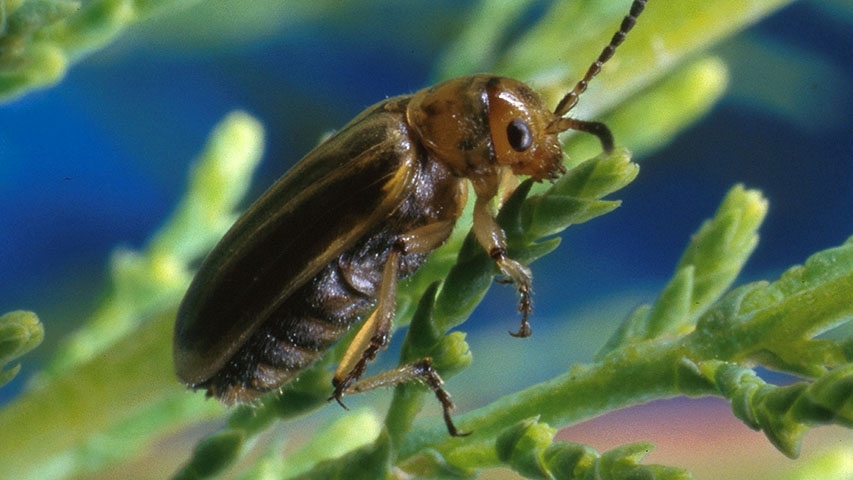Moving Tamarisk Leaf Beetles

The U.S. Department of Agriculture (USDA) is promoting the conservation of the southwestern willow flycatcher. This endangered bird nests and feeds in dense forests of willow and non-native saltcedar (tamarisk trees) along southwestern rivers.
If you are a landowner or land manager with abundant saltcedar on your property, you can help. If you have been considering moving tamarisk leaf beetles onto your property and releasing them to help control the saltcedar, we urge you not to do so. Releasing this beetle may harm habitat critical to the flycatcher and other native wildlife. USDA’s Animal and Plant Health Inspection Service (APHIS) discontinued issuing permits for the interstate movement of this biological control agent, so moving the beetle may violate the Plant Protection Act.
River damming and diversion and other man-made stressors have created environments that favor saltcedar over native cottonwood and willow trees. Because the structure of saltcedar is similar to willows, flycatchers and other wildlife can inhabit these trees when conditions are right. Currently, just over 50 percent of all known flycatcher breeding territories rely upon tamarisk trees or combinations of native vegetation and tamarisk.
Penalties for Violating the Plant Protection Act
Under the Plant Protection Act, the maximum penalty for an individual for a first-time violation not related to monetary gain is $1,100 and $60,000 for subsequent violations. The maximum penalty for an individual for violations related to monetary gains is $60,000 per violation. The maximum penalty for legal entities such as a company or corporation is $300,000 per violation.
APHIS works closely with people or entities that wish to import, move interstate, or release a potential plant pest. Part of this work is a rigorous evaluation required by the National Environmental Policy Act of potential impacts on the environment, including endangered and threatened species. When people move organisms in the environment without first going through the permitting process, they put fragile ecosystems and native species at risk. Before moving a potential plant pest, please contact your local APHIS office to learn how to do so safely and legally.
Alternative Ways to Control Saltcedar
Fortunately, there are ways to control saltcedar without using tamarisk leaf beetles, and USDA has resources to help. We encourage landowners and lease holders to work with the USDA Natural Resources Conservation Service’s Working Lands for Wildlife (WLFW) partnership. The WLFW typically covers 50 to 70 percent of the actual costs to improve riparian habitat management for the flycatcher. Planting native trees and removing non-native invasive plant species can also be effective strategies in combination with managing man-made stressors.
Removing tamarisk trees is not expected to elevate water tables already lowered by dams, return surface water to rivers, or restore native cottonwoods and willows.
To learn more about the WLFW’s flycatcher program, visit its Web page by typing “NRCS Working Lands for Wildlife flycatcher” into your favorite search engine. You can also access the southwestern willow flycatcher website for more information.
Protecting Desirable Saltcedar
If you have planted or use saltcedar for landscaping purposes and wish to protect those trees from the beetle, discuss potential pest management options with your local Extension agent. To find an Extension office in your State, visit USDA’s Land Grant University Website Directory and click on your State on the map. In addition, if you have concerns about wildfire risk that dead trees may pose on your property, you may wish to contact your local wildfire response organization for assistance and information.
Thank You for Helping
We appreciate your help in protecting America’s landscapes and conserving this endangered species.
Help us spread the word to stop the beetle's spread. Use the links below. The Microsoft Word document contains a short article you can post on your blog or include in your newsletter. It also has suggested Facebook posts and tweets. You can download the image for each communication product using the image links.
- Tamarisk Leaf Beetle Communication Templates (264.64 KB)
- Newsletter Article Blog Post (Image)
- Social Media Adult Tamarisk Leaf Beetle (Image)
- Social Media Southwest Willow Flycatcher (Image)
In addition, feel free to download, print, and distribute our English and Spanish factsheets:

